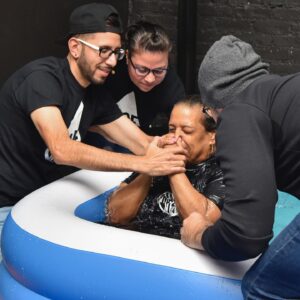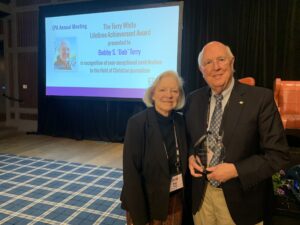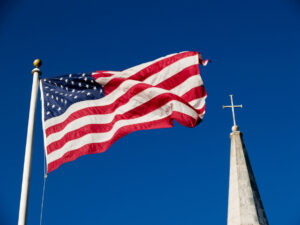
ST. LOUIS (BP) — God is moving among Native Americans and within the Fellowship of Native American Christians, say leaders of the group.
Reports of several success stories will be shared at FoNAC’s June 13 annual meeting. The gathering is one of several gatherings of Southern Baptist ethnic fellowships taking place in conjunction with the Southern Baptist Convention’s June. 14-15 annual meeting in St. Louis.
“We anticipate a very good meeting,” said Gary Hawkins, executive director of FoNAC. “There are a lot of things seen and unseen that we have to celebrate this year. We invite everyone interested in ministry with Native Americans to attend.”
The annual meeting’s business will include election of officers, changes in board members, reports of the last year’s activity — including a national Native World Youth Summit last September in Big Sky, Mont., vision tours, starting new work — and discussion of partnerships.
The United States’ population of American Indians and Alaska Natives, including those of more than one race, totaled 5.1 million in 2011, according to the U.S. Census Bureau. About 22 percent live on the nation’s 275 Indian land areas in the U.S. administered as Indian reservations (reservations, pueblos, rancherias, communities, and the like), according to the Bureau of Indian Affairs.
Yet a very high percentage — estimates exceed 90 percent — of the Native Americans living anywhere in the nation have minimal or no connection to Christianity, Hawkins said.
FoNAC has prayed and strategized to change that figure. Its new paradigm is to work with — not for — Native Americans to reach others within their circles of influence.
“We are trying to take the approach not to be people going to them but people coming from them, and that’s a slow process — to evangelize and from that develop leaders,” Hawkins said. “We want to network with all Native people, indigenous people. We believe one of the ways that’s going to be effective is to find Native people who are willing to become planters and people who are learning they can become culturally sensitive while remaining doctrinally sound.”
It’s a missional model that he finds “very encouraging,” Hawkins said. Ever since legendary missionary Annie Armstrong in 1880 heard of the need among Native Americans, many Southern Baptists have responded generously with their time, talents and possessions, doing whatever they could for Native Americans.
Some of the youngsters and their parents that Southern Baptists reached on reservations with a variety of children’s and youth activities, revivals, storytelling and other efforts are today’s grandparents and great-grandparents who have become stalwart Christian witnesses.
Now with FoNAC’s leadership to doing ministry with — not for — Christian Native Americans already in place, and with an awareness of the need to reach Native Americans living in the nation’s largest cities, Hawkins and other leaders can see a shift in ownership of the missional concept of advancing the Kingdom of God.
They also see the truism of Southern Baptist statesman Henry Blackaby’s “look for where God is working and join Him there,” as they see God’s activity, Hawkins said.
This often involves big cities, where Native Americans combine their cultural heritage with big-city mindsets. Partners are needed — individuals, churches, clusters of churches, associations and state conventions — to help establish Native American churches in the nation’s largest cities.
An example from 2015: “A man from Houston contacted the North American Mission Board, looking for a Native American church planter,” Hawkins said. “A returning IMB missionary from Venezuela wanted to work with Native Americans. I served as a conduit that connected these two, so by working together, that need has been met.
“We also understand that many Native Americans live in smaller towns and rural areas,” Hawkins noted. “God is working there too, and we will continue to assist them in ways that we can.”
An example: “A man in Texas interested in church planting with Native Americans contacted NAMB, who contacted us, and we connected him with the director of missions for the Western Oklahoma Indian Baptist Association. Now he’s working with tribes in western Oklahoma,” Hawkins said. “These are some of the unseen things God has included us in doing His Kingdom work this year.”
These and other reports will make up the bulk of FoNAC’s business at its annual meeting.
Guest speaker is to be Mark Custalow, church planting team leader and church planting strategist with the Southern Baptist Conservatives of Virginia state convention. Custalow, a native Virginian, also is chief of the Mattaponi tribe headquartered in West Point, Va.
Hawkins said of Custalow, “Mark is an engaging speaker who is passionate about the need to reach Native Americans.”
“He will give us good insights into where Native Americans live,” Hawkins noted, “and how they can be reached with the life-changing Gospel of God’s personal love for all people.”
Native Praise, an ensemble whose membership consists of 54 Native women from 17 tribes and 29 churches, each in traditional clothing from their tribe, will lead in worship, directed by Augusta “Gus” Smith of Tulsa, Okla.
Anglo and other ethnic groups will find this missional focus — and FoNAC’s annual meeting — to be most satisfying, Hawkins said, because it has multiplication built in.
“We must do things contextually, low-cost and reproducible,” Hawkins said. “The strategy is to find Native Americans who are seeking and praying for a movement of God within their people. We want to help indigenous people to become better equipped in such a way that they are not reliant on outside groups, yet we seek to engage those missional partners desiring to come alongside FoNAC in very essential, engaging roles of facilitating evangelism, leadership development and church planting.”
FoNAC’s annual meeting is open to everyone interested in ministry with Native Americans, Hawkins said. The meeting is set for 10 a.m. Monday, June 13, in Second Level Room 263 of America’s Center, 701 Convention Plaza in St. Louis.















